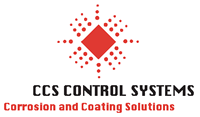Suppose that you lose your pen. As a result you cannot write because you do not have a writing
instrument that functions. That simple device, your pen, has a miraculous effect on your ability
to perform. It is in this connection that we want to discuss the science and technology of
corrosion. We live in a highly industrialized country. We all use parts which are extensions of
us, and those parts periodically wear out, break and malfunction. Much of that is due to corrosion.
Each year, a tremendous amount of money is lost to corrosion in the United States. Figures
change each year, but a reasonable estimate for the year 2006 is 400 billion (that is "billion with a
B") dollars. This is of the order of 2-4 % of the Gross National Product. This amount is more
than the cost of all of the natural catastrophes that take place in the United States each year. It is
more that all of the hurricanes, tornadoes, volcanoes, floods, even including the infamous Katrina
of New Orleans.
DEFINITION
A good definition of corrosion is: A destructive attack (Chemical Breakdown) on a material
by its environment. This definition includes the partial or complete wearing away, dissolving, or
softening of any substance by chemical or electrochemical reaction with its environment. We
normally think of metals when we think of corrosion, but a good definition is one which deals
more broadly with materials in general to include any material such as metal, wood, plastics, etc.
Admittedly, the most familiar example of corrosion occurs with rusting of iron. It is a complex
chemical reaction in which the iron combines with both oxygen and water to form an oxide. As a
matter of practical concern, the corrosion of metals is more problematic than that of other
materials.
CORROSION FORMS
The general types of Corrosion include uniform, electrochemical, galvanic, concentration cell,
erosion, embrittlement, stress corrosion, filaform, corrosion fatigue, intergranular, fretting,
impingement, dezincification, and chemical reaction. For convenience we will categorize the
various kinds of corrosions into eight different forms. In fact, one could have twenty or fifty-two
or whatever. In any event we could have some subcategories if needed. Those eight forms are
(1) Galvanic, (2) Crevice, (3) Pitting, (4) Intergranular, (5) Leaching, (6) Erosion-
Corrosion, (7) Stress Corrosion Cracking, and (8) Hydrogen Attack (Embrittlement).
GALVANIC: Galvanic corrosion can result when a metal is in contact with another dissimilar
metal. In order for galvanic attack to take place, there must be four things present. First, there
must be an anode. This is the material which corrodes (e.g., the formation of rust takes place if
the metal is iron). Second, there also must be another electrode called the cathode. Third, an
electrical connection must exist between the anode and cathode through which electrons can
flow. Finally there must be an electrolyte through which chemical ions can flow. This is
generally an aqueous (water) solution yet even damp soil can make an excellent electrical
conductor. The arrangement of these four specific components is always necessary for an
electrochemical chemical cell to function. However in the case of galvanic corrosion, the anode and cathode are clearly dissimilar metals, copper and zinc, iron and brass, or mild steel and cast
iron, for examples.
EXAMPLE: GALVANIC CORROSION
CREVICE: Consider a sheet of stainless steel that has been immersed in the ocean for some
time, years perhaps. It has had a bolt with a washer on it to hold it in place. We notice that
corrosion has taken place underneath the washer. The reason for the corrosion is that a crevice
had been created under the washer. Stagnate water, an electrolyte, accumulated in the crevice.
An electrochemical, corrosion cell had been produced and corrosion resulted. This cell is called a
differential aeration, or oxygen concentration cell. It results because there is a difference in the
composition of the electrolyte under the washer and that outside of the washer. There is a higher
oxygen concentration in the solution that surrounds than washer that there is under the washer. It
may surprise you to know that corrosion takes place at the lower oxygen concentration whenever
we have an oxygen concentration cell. You may have associated corrosion with a higher oxygen
concentration which is a true general statement. But, remember, in the case of a crevice, or a pit, there are two oxygen concentrations in the electrochemical cell that has is such that corrosion takes place at the lower oxygen concentration..
EXAMPLE: CREVICE CORROSION
PITTING: Some materials are more subject to pitting than others. Imagine that we find a
stainless steel spoon lying on the beach near the ocean where it has been for several days. It has
corroded. Little pits have formed. Pitting corrosion is a form of corrosion that most of us see on
almost a daily basis. This corrosion cell, i.e., the electrochemical mechanism of the corrosion, is
very similar to that of crevice corrosion. There is a stagnant solution at the bottom of the pit, i.e.,
a lower oxygen concentration is outside of the pit than inside, resulting in another oxygen
concentration cell. Corrosion takes place at the bottom of the pit. Do you recall why? Generally,
as the pit gets deeper, the solution at the bottom of the pit becomes more stagnant creating more
driving force to promote corrosion. A pit is said to be self-catalyzing.
EXAMPLE: PITTING CORROSION
INTERGRANULAR: Consider a stainless sheet that has been welded to another. Along each
side of the weld you see a corrosion attack called weld decay. This attack takes place by
intergranular corrosion. That is, the attack is into the boundaries of the metallic grains that make
up the metal. As the metal is heated during the weld, chromium is precipitated out of the heated
grains and deposits in the grain boundary, an area that separates the grains and is burdened with
impurities. Again, the components of a chemical corrosion cell are the result.
EXAMPLE: INTERGRANULAR CORROSION
LEACHING: Selective leaching corrosion is corrosion accelerated by the selective leaching of
an alloying element out of the alloy matrix. The most common form of this type of corrosion is
Dezincification, the selective leaching of zinc out of the brass matrix. Brass is made of zinc and
copper. Zinc is considerable more corrosive than is copper. In certain cases, e.g., when brass is
exposed to an aggressive environment, the zinc will corrode preferentially and leaching zinc from
the brass alloy leaving behind a weak network of copper. It may look strong but is has been
severely weakened.
EXAMPLE: STRESS CORROSION CRACKING
HYDROGEN EMBRITTLEMENT: In general, �embrittlement corrosion� is corrosion that
causes a ductile material to fail without localized yielding or shearing. More specifically,
hydrogen embrittlement assumes several different forms with a general similarity. This damage
takes place at the cathode, an area that we normally think is safe from corrosion � remember the
saying that �corrosion takes place at the anode�, but it does not in this case. Hydrogen ions are
reduced to hydrogen molecules at the cathode. Those atoms usually pair-up to become hydrogen
molecules. These molecules harmlessly bubble off as hydrogen gas. However, some metals are
very susceptible to letting hydrogen atoms permeate into the grains. This is done while the
hydrogen exists as a atom, before it becomes a molecule. Once inside the metal the hydrogen
atoms can do all sorts of mischief that results in hydrogen damage.
EXAMPLE: HYDROGEN EMBRITTLEMENT
METHODS OF CORROSION PREVENTION
There are five methods of corrosion prevention or control that are generally used.
They are: (1) Material Selection, (2) Environmental Change, (3) Cathodic and Anodic
Protection, (4) Coatings, and (5) Design.
Material Selection: Material selection consists of obtaining a material which will do the job that
we want done. One might think that the job that we want done is obvious, that it is to stop
corrosion. But corrosion control is almost always an economic situation. Assume that you have
some steel that is corroding. Perhaps you could stop the corrosion if only you were to use some
noble metal such as platinum. �But platinum is too expensive,� you say. It is this type of
economic consideration that we have to take into account. We select the material which is best
for the job. This includes cost and strength as well as corrosion resistance considerations.
Environmental Change: Sometimes we can change the environment in which the corroding
material is enclosed. When we think of environment, we might think of temperature and the
possibility that we can control it. We might consider the concentration of solutions and the ions
in the solution. Or we might think of our ability to add inhibitors to provide some control over the
corrosion. An everyday example of a corrosion inhibitor of which almost everyone is aware is the
inhibitor put into automobile-engine cooling radiator.
Cathodic and Anodic Control: Wouldn�t it be nice if all we had to do was to turn a switch and
find that we had stopped corrosion? We have the capacity to do just that with cathodic and
anodic protection methods. Cathodic protection is used extensively worldwide as a corrosion
control method. Anodic protection is used to a lesser extent, but nevertheless has some very
interesting possibilities with respect providing corrosion protection. Cathodic protection results
when we impress a negative potential onto the material we want to protect. Anodic protection is
possible in very specific cases when we impress a positive potential. However this must be done
with quite stringent controls.
Coatings: When we think of coatings, many of us think of paints. But in addition to paints there
are other types of coating such as metallic coatings, electro-plating, galvanizing, etc. Coatings
are frequently use for cosmetic purposes. Look around you. Do you see anything this is not
coated? You see coatings almost everywhere. They generally have two purposes. One is
cosmetic; the other purpose is corrosion protection. The latter purpose is of particular interest to
engineers. The corrosion engineer has a wide range of coatings from which to select.
Design: Perhaps you think of control by design as changing the design in some extremely clever
way. But one might simply design a material to be bigger and thicker and simply let it corrode
away. Normally design is simply a common sense approach such: how to drain tanks, where to
locate a plant, and how to install various parts of a plant, etc.
CONCLUSION
�Murphy�s Laws� may be used to summarize our comments on corrosion. For example,
�Anything that can go wrong will go wrong,� and �Anything that has been put together will fall
apart sooner or later.� We can paraphrase that and say, �Anything that has been put together by
man sooner or later will corrode.� And add, �It needs the attention of a corrosion engineer before
the corrosion starts.�
President and Chief Technical Officer: Earl L. Pye, BS, MS, Ph.D., PE --- Earl is a world renowned consultant in the areas of coatings and corrosion control. He has built a reputation and a business based on his customer-centric approach to consulting.
See his Profile on Experts.com.
©Copyright 2006 - All Rights Reserved
DO NOT REPRODUCE WITHOUT WRITTEN PERMISSION BY AUTHOR.










